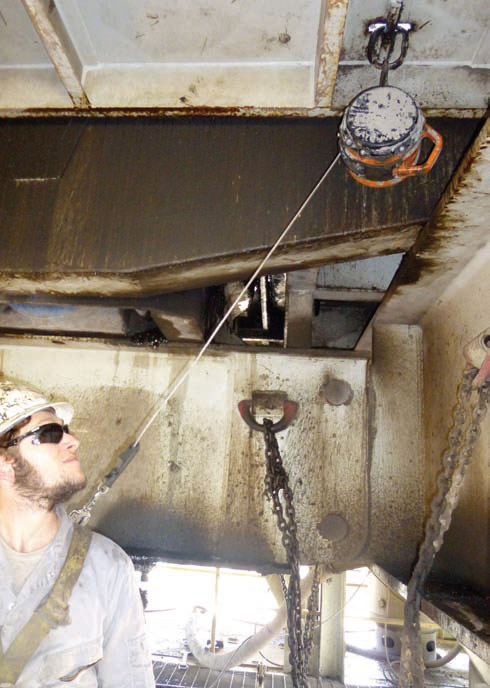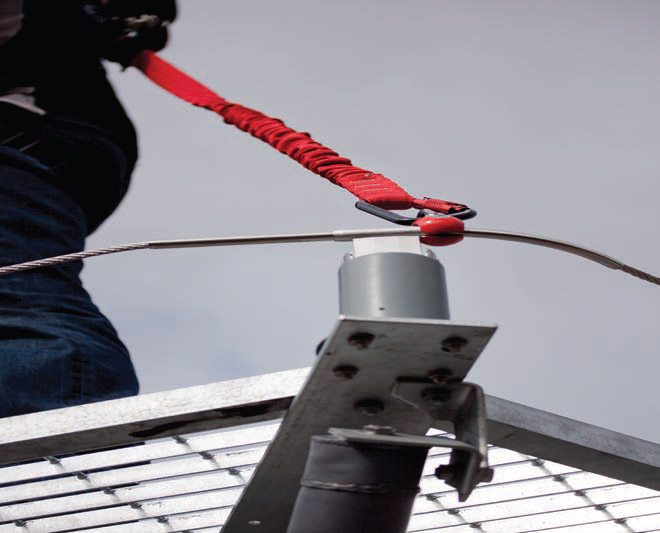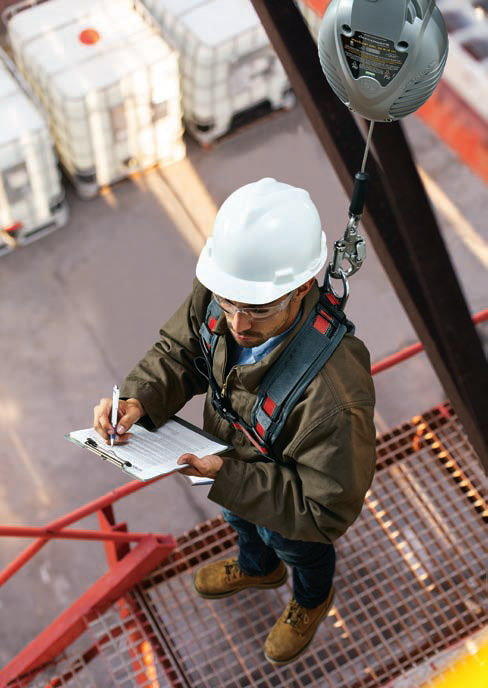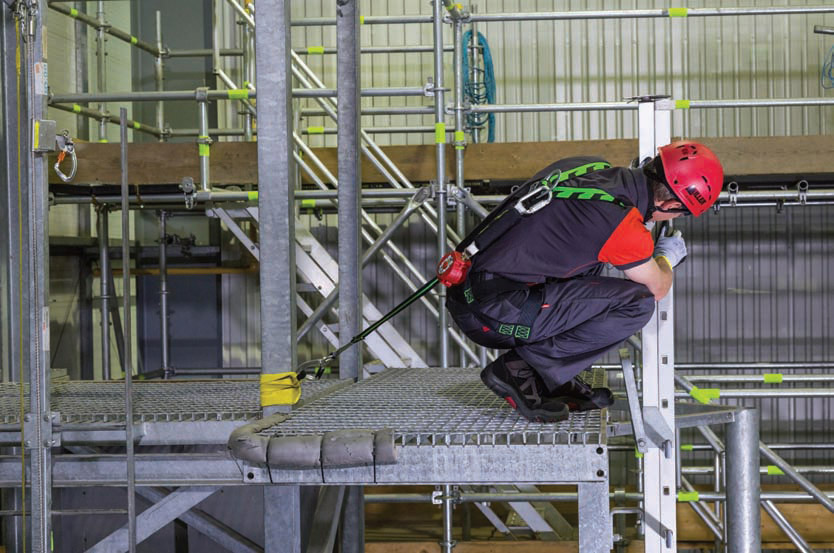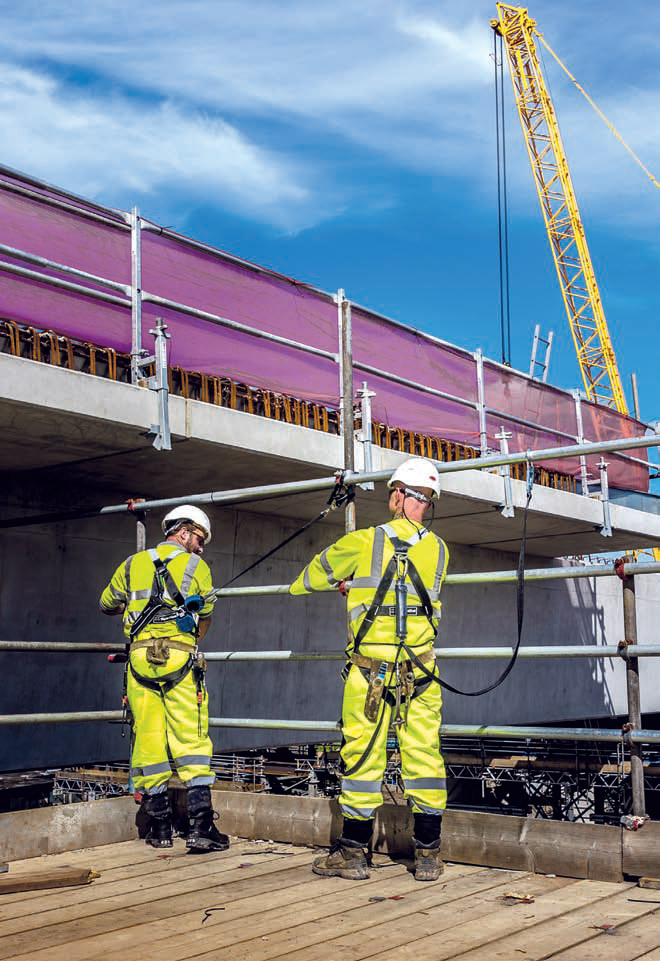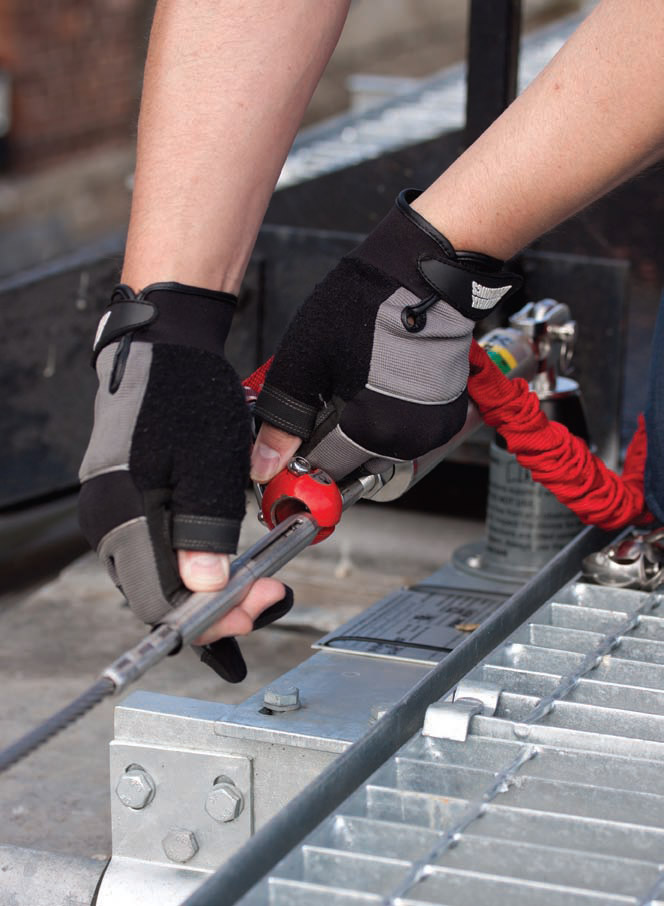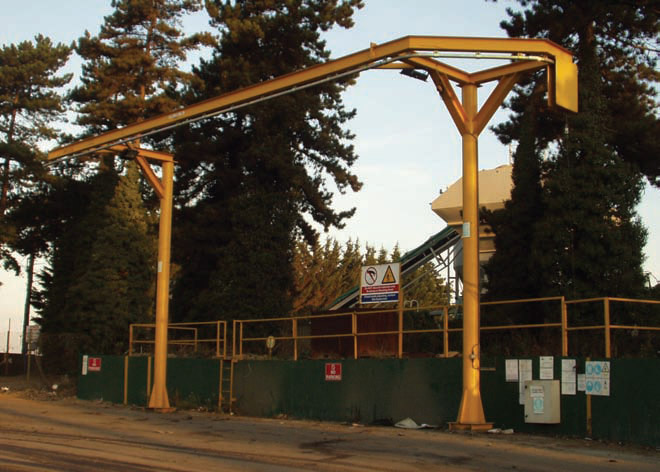Safety at height
14 November 2016Fall protection and fall arrest systems are a vital element in providing safe working conditions for overhead crane engineers. We look at recent news from work at height safety equipment providers, and a range of technical solutions.
Crane inspection is inherently risky. Working at height, engineers are at risk of potentially fatal or life-changing falls. For this reason, suitable access equipment should be used, and fall protection systems should be fitted where needed.
One indication of the growing awareness of the importance of fall protection has been a series of acquisitions in the sector.
In 2015, 3M paid £2.5bn to acquire Capital Safety from investment firm KKR. At the time, 3M said that the deal bolstered its personal safety platform to meet the growing demand for personal protective equipment driven by increasing regulatory focus on worker safety across both developed and developing countries.
Later that year, MSA paid £11 per share, or roughly £124m, to acquire Latchways. MSA estimated the value of the global fall protection market at $1.5–2bn a year, calling the sector “one of the largest and fastest growing segments of the sophisticated safety products markets”. The deal would, MSA said, double the size of its global fall protection business, making it one of the world’s largest fall protection providers.
Retraction squaredOne of the latest new products in the sector is SpanSet’s new fall arrest lanyard, the DSL 2, which improves on the original retractable DSL by retracting even when a user is falling, reducing fall distance while still allowing flexibility to work.
“The DSL achieves a 50% improvement on the requirements set out in EN355 and opens up the potential to effectively protect workers in previously difficult locations as well as improving security further for all others,” SpanSet said.
The company said that when it comes to fall arrest lanyards most users currently choose a full 2m version for maximum freedom of movement, but in doing so have to accept they will allow potentially longer falls even when the full freedom of movement is not required.
“The problems with falling are twofold: the further the fall (the freefall distance) the longer it takes to arrest or stop the fall in a controlled manner; and the further you travel during either the freefall or the arrest phase the more likely you are to collide with obstacles or the floor.“
Having a lanyard the right length for each task would keep the potential fall to the minimum.
When the original DSL was launched in 2012 it allowed users to have a full-length lanyard with the capability to be anchored at its full extent below the worker if required, but retractable to remove excess length when not needed, providing users with a far higher level of security especially when working at low levels or above hazards such as machinery or structural elements.
The DSL 2 retractable lanyards go further, extending and retracting in use as required, but additionally during a fall they continue to retract resulting in significantly reduced falls that are consequently quicker to arrest.
“The benefit is so significant that in tests the DSL arrests the falling mass completely before a conventional lanyard even becomes taut,” the company said. The DSL 2 has been tested for users up to 140kg.
Lightweight and durable
At the end of 2015, Honeywell’s Miller fall protection division launched the TurboLite Edge, a new lightweight and highly durable self-retracting lifeline (SRL) weighing 1kg, Miller says this makes it the lightest 2m edge self-retracting lifeline on the market. The new fall protection system, which Miller says is 15% lighter than most comparable products, offers users in the construction, maintenance, utilities and oil and gas sectors increased comfort, freedom of movement, and immediate arrest in case of fall.
“We recognised a growing need for a lightweight, fully-edge tested and compliant SRL, that would help workers in demanding conditions and environments feel safe and confident with their fall arrest device,” said Corentin Barbieux, product manager of fall protection solutions for Honeywell Industrial Safety, EMEA. “The lifeline has been designed to provide workers with a single solution for protection in all working at height situations, including those at foot level.”
Miller TurboLite Edge is fully edgetested and certified for workers weighing up to 140kg due to the use of highly durable reinforced webbing. The lifeline is also approved to be attached at foot level (FF2) to protect workers who are at risk of falling over an edge but have no choice for a higher anchorage point (FF1 or FF0). It has a quick locking mechanism for reduced fall arrest distance, especially important when little vertical clearance is available.
Other unique features include two swivels, one on the housing and one integrated to the aluminium anchorage connector, stopping users from feeling restrained while moving. The swivels prevent the webbing from twisting and therefore removes any risk of the retractor blocking when it is engaged.
The twist-lock top karabiner enables the SRL to be quickly and easily attached to a harness, while the inclusion of a highly visible fall arrest indicator on the webbing enables both user and safety manager to easily identify when the system has been exposed to a fall. Miller TurboLite Edge is certified to EN360:2002 and meets all tests VG11.060 (edge), VG11.062 (140kg) and VG11.085 (FF2).
Rigid track
Niko supplies rigid tracks to be used with fall arrest systems. The company’s systems are often used by the entertainment industry, but are also suitable for use for vehicle servicing and crane inspections.
The company explains that there are three main types of fall arrest track systems. The first is a single rail track. This allows for single file traffic to move around the track.
The second is a double rail fall arrest system which allows for individuals to pass each other on the track without the need to detach from the system. The final type is similar to a bridge crane arrangement, with a cross travel bridge track suspended from two long travel downshop rails, suspended directly from the ceiling or via a freestanding support structure.
Fall arrest track systems have less impact on the operator when they fall compared to conventional taut wire fall arrest systems.
This is because they are rigid and do not sag under the weight of the operator, which also stops post-fall bouncing. On a taut wire fall arrest system one person falling may cause other operators to fall, but on rigid fall arrest track system this is not the case. Furthermore, after a fall on a fall arrest track, the system can be reused instantly following a visual inspection and shouldn’t need replacing.
Most fall arrest track systems are of modular design, there is no limit to the length and they can be moved, added to or developed. Another benefit of fall arrest track systems is that they can be fitted to a variety of structures, including walls, ceilings, I-beams and support beams to ensure a wide base of applications.
Adaptive safety British safety firm Checkmate was founded in 1979 and has since been awarded three Queen’s Awards, the most recent being for Innovation
Checkline II is Checkmate’s latest 8mm single wire horizontal lifeline system. It is designed to offer increased functionality and simpler installation.
Checkmate says that Checkline II systems are suitable for working on exposed roof edges, catwalks, servicing roller coasters or maintaining cranes, and are placed in challenging environments all over the world.
The posts have patented rubber damper technology which allows installers to fix directly to the top layer of most roofing panels. If through fixing is required, Checkmate has an unlimited range of brackets, adaptors, weather seals, thermal foam-filled posts and fasteners to suit all roof types.
Checkmate explains that the wide variety of uses for the systems, and choice of components, means that detailed calculations should be performed for each installation, and verified by a qualified structural engineer.
Checkmate offers two types of Checkline II systems. TopFix systems are mounted using damper posts, connected on to the roof surface without bolting to structural members through the roof.
More typical for the overhead crane industry will be InLine systems. These don’t need the TopFix post system to reduce energy. Dynamic loadings are managed via the InLine Damper System (IDS) and are usually bolted directly to steel, brick or concrete.
One of the core components of the new system is the new CheckLine Ball Trolley. This is designed to enable a smooth transition through intermediate and corner brackets. The device can be used on either side of the lifeline.
The compact CheckLine Ball Trolleys have a unique stainless steel ball bearing design with a swivel handle allowing the device to be pulled as close to the centre line of the cable as possible. This stops the device from twisting and ensures it passes intermediates smoothly.
Comprehensive support
MSA Latchways offers a very wide set of fall protection systems, suitable for many different applications. For industrial users, like crane engineers, the company offers a choice of engineered permanent systems that users can specify to run horizontally, overhead and vertically on ladders.
Horizontal solutions will be most appropriate for crane inspection. The systems can be designed for up to five simultaneous users. It can be fixed to virtually all types of structure and roofing system, and follows the contours of the building by going around bends and up and down inclines. It can be extended to include vertical sections.
The company’s unique Transfastener allows workers to travel the full length of the system without having to detach and re-attach. Horizontal systems from Latchways normally incorporate the company’s Constant Force post for assured fall arrest protection and simplified installation. Where the Constant Force post is not applicable, in-line shock absorbers or a Constant Force energy absorber can be incorporated for equal safety assurance.
The system meets all appropriate international standards.

